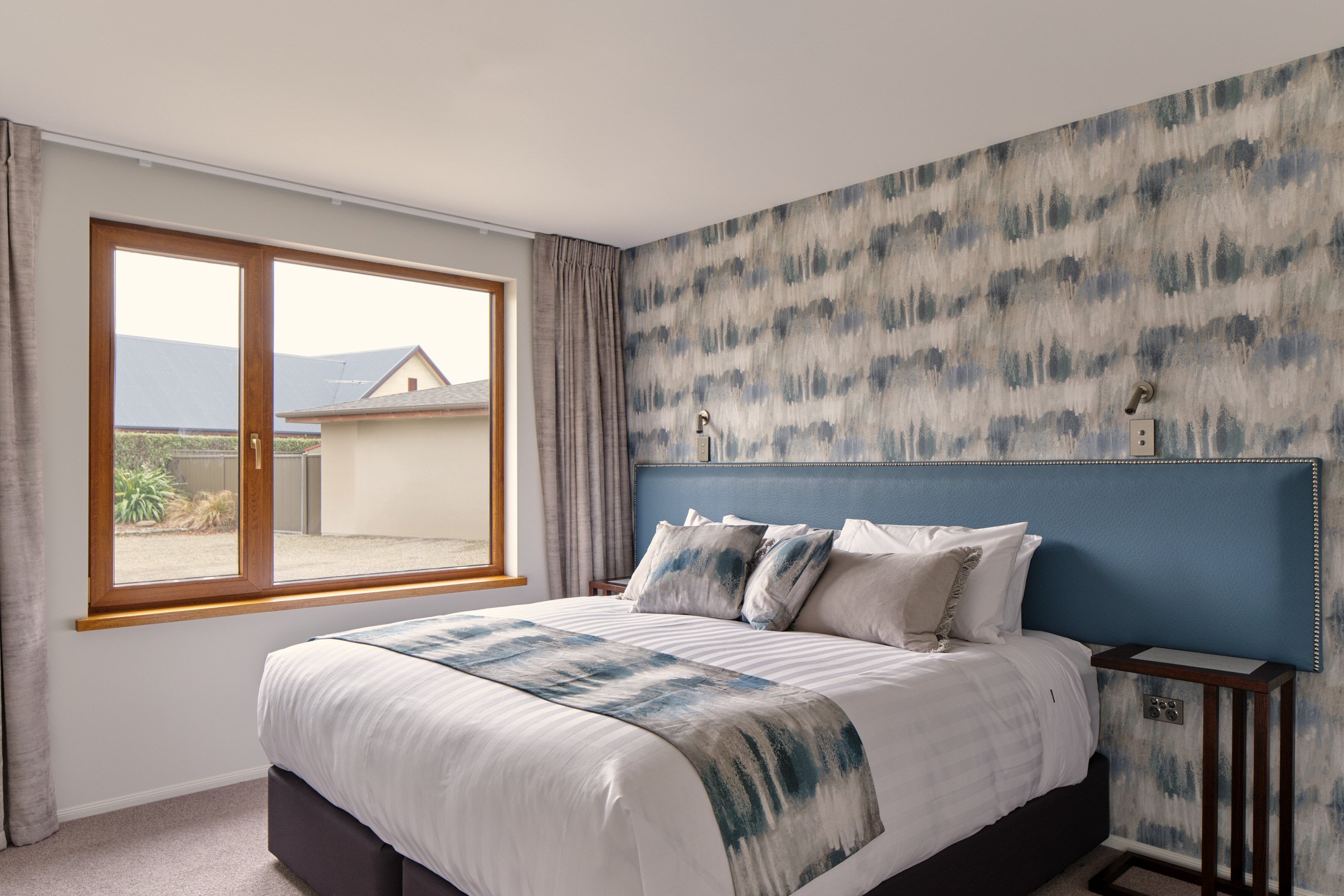How to choose and hang wallpaper
Modern wallpapers offer a huge variety of textures, patterns and colourways, ranging from contemporary takes on retro forms, to subtle tones with touchable texture, and bright, nature-based artworks.
For those who have memories of parents – or even yourself – struggling with glues, rollers and trims, you may be pleased to know that many modern wallpapers are also much simpler to hang than they have been in the past..
Which wallpaper suits your space?
The first step is to look at the dimensions of the room we are wallpapering, as colours and patterns can change how we see a space. Here are some hints around spatial perception.
Vertical stripes or patterns make the ceiling appear higher
Horizontal stripes or patterns make a room seem wider and ceilings appear lower
Large patterns work best in large spaces. In small rooms, they can be overpowering
Dark colours make a room seem smaller
Light background colours make a room look larger
To measure your space, take a tape measure and start with the width of each wall, noting down the measurements as you go. Leave out doors and windows. Then, you may need to get out a ladder to do the floor to ceiling measurement. This will give you a full measurement, which you can use to order your rolls. I recommend ordering one extra roll in case mistakes are made along the way and to allow for overlap and pattern matching.
Choosing patterns and colours
This comes down to your intention for a room. Are you looking to make a bold statement, create a feature wall, develop a traditional look in your home, or something else? If you’re not sure – or you find it hard to envision the end result – this is where an interior designer like myself comes in very handy!
My experience working across projects from a wide variety of eras and with clients who have different tastes and styles has given me a keen eye for what works and what doesn’t. Here are a few points to think about when choosing patterns and colours.
Classical and traditional patterns with neutral tones will lend a sense of formality.
A singular wall of a traditional pattern with brighter colours can have the opposite effect, especially in a modern home. A feature wall of William Morris paper set among pale timbers and concrete floors, for example, will lend an unexpected pop of brightness and patterning
Love a bold pattern but afraid you will get tired of looking at it? Use it for a powder room! These small spaces are a great opportunity to do something different
Similarly, many modern homes feature wallpapers as splashbacks in kitchens. This is a great way to introduce a bright, busy pattern, which can be replaced easily at a later date if you wish
Samples will ensure you are making an informed choice. Take home a few different styles as sometimes you will be surprised by what works in a space.
Practical elements
While most of us have thrown a lick of paint on a wall or two in our lifetimes, hanging wallpaper can be something of an artform. If you have never used wallpaper before and intend to hang it yourself, here are a few pointers.
Vinyl wallpapers are a popular choice for novices, as these ‘peel and stick’ varieties can be much simpler to apply to walls without fussing with glues. They are also durable and easy to clean, as well as removable.
Sound-absorbing wallpapers can serve the dual purpose of insulating a space from noise and providing colour and texture.
Prep your walls well by removing any loose paint and sanding back any imperfections, which will be noticeable through the paper. If your walls have high gloss paint on them, wash them well with sugar soap.
Patterns should be matched as you hang, which will take some patience and teamwork. There are many Youtube videos that show the best way to do this, or use a professional to be sure.


